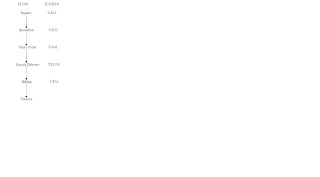Sales Order:
VA01 – Create Sales Order
VA02 – Change Sales Order
VA03 – Display Sales Order
Inquiry:
VA11 – Create Inquiry
VA12 – Change Inquiry
VA13 – Display Inquiry
Quotation:
VA21 – Quotation Creation
VA22- Change Quotation
VA23 – Display Quotation
Delivery:
VL01N – Create Delivery Document
VL02N – Change Delivery Document
VL03N – Display Delivery Document
Billing:
VF01 – Create Billing Document
VF02 – Change Billing Document
VF03- Display Billing Document
Material:
MM01 – Create Material
MM02 – Change Material
MM03 – Display Material
Purchase Requisition :
ME51N – Create Purchase Requisition
ME52N – Change Purchase Requisition
ME53N – Display Purchase Requisition
Request For Quotation : (RFQ)
ME41 – RFQ Creation
ME42 – Change RFQ
ME43 – Display RFQ
Purchase Order:
ME21N – Create Purchase Order
ME22N – Change Purchase Order
ME23N - Display Purchase Order
Vendor Evaluation:
ME61 – Create Vendor Evaluation
ME62 – Change Vendor Evaluation
ME63 – Display Vendor Evaluation
Material Document:
MB01 – Create Material Document (Goods Receipt for purchase order)
MB02 - Change Material Document
MB03 - Display Material Document
Vendor:
XK01 – Create Vendor
XK02 – Change Vendor
XK03 – Display Vendor
Vendor creation for MM Module Wise:
MK01 – Create Vendor
MK02 – Change Vendor
MK03 – Display Vendor
Vendor creation for FI Module Wise:
FK01 – Create Vendor
FK02 – Change Vendor
FK03 – Display Vendor
Customer :
XD01 – Create Customer
XD02 – Change Customer
Xd03 – Display Customer
Customer creation for SD Module Wise:
VD01 – Create Customer
VD02 – Change Customer
VD03 – Display Customer
Customer creation for FI Module Wise:
FD01 – Create Customer
FD02 – Change Customer
FD03 – Display Customer
Cost:
KS01 – Create Cost Center
KS02 – Change Cost Center
KS03 – Display Cost Center
Profit:
KE51 –Create Profit Center
KE52 – Change Profit Center
KE53 – Display Profit Center
Accounting:
FB01 – Create Accounting Document Number
FB02 – Change Accounting Document Number
FB03 – display Accounting Document Number
Banking:
FI01 – Create Bank Details
FI02 – Change Bank Details
FI03 – Display Bank Details
BOM:
CS01 – Create BOM
CS02 – Change BOM
CS03 – Display BOM
Recipe:
C201 – Create Recipe
C202 – Change Recipe
C203 – Display Recipe
Batch:
MSC1N – Create Batch
MSC2N – Change Batch
MSC3N – Display Batch
Process Order:
COR1 – Create Process Order
COR2 – Change Process Order
COR3 – Display Process Order
Production Order:
CO01 – Create Production Order
CO02 – Change Production Order
CO03 – Display Production Order
VA01 – Create Sales Order
VA02 – Change Sales Order
VA03 – Display Sales Order
Inquiry:
VA11 – Create Inquiry
VA12 – Change Inquiry
VA13 – Display Inquiry
Quotation:
VA21 – Quotation Creation
VA22- Change Quotation
VA23 – Display Quotation
Delivery:
VL01N – Create Delivery Document
VL02N – Change Delivery Document
VL03N – Display Delivery Document
Billing:
VF01 – Create Billing Document
VF02 – Change Billing Document
VF03- Display Billing Document
Material:
MM01 – Create Material
MM02 – Change Material
MM03 – Display Material
Purchase Requisition :
ME51N – Create Purchase Requisition
ME52N – Change Purchase Requisition
ME53N – Display Purchase Requisition
Request For Quotation : (RFQ)
ME41 – RFQ Creation
ME42 – Change RFQ
ME43 – Display RFQ
Purchase Order:
ME21N – Create Purchase Order
ME22N – Change Purchase Order
ME23N - Display Purchase Order
Vendor Evaluation:
ME61 – Create Vendor Evaluation
ME62 – Change Vendor Evaluation
ME63 – Display Vendor Evaluation
Material Document:
MB01 – Create Material Document (Goods Receipt for purchase order)
MB02 - Change Material Document
MB03 - Display Material Document
Vendor:
XK01 – Create Vendor
XK02 – Change Vendor
XK03 – Display Vendor
Vendor creation for MM Module Wise:
MK01 – Create Vendor
MK02 – Change Vendor
MK03 – Display Vendor
Vendor creation for FI Module Wise:
FK01 – Create Vendor
FK02 – Change Vendor
FK03 – Display Vendor
Customer :
XD01 – Create Customer
XD02 – Change Customer
Xd03 – Display Customer
Customer creation for SD Module Wise:
VD01 – Create Customer
VD02 – Change Customer
VD03 – Display Customer
Customer creation for FI Module Wise:
FD01 – Create Customer
FD02 – Change Customer
FD03 – Display Customer
Cost:
KS01 – Create Cost Center
KS02 – Change Cost Center
KS03 – Display Cost Center
Profit:
KE51 –Create Profit Center
KE52 – Change Profit Center
KE53 – Display Profit Center
Accounting:
FB01 – Create Accounting Document Number
FB02 – Change Accounting Document Number
FB03 – display Accounting Document Number
Banking:
FI01 – Create Bank Details
FI02 – Change Bank Details
FI03 – Display Bank Details
BOM:
CS01 – Create BOM
CS02 – Change BOM
CS03 – Display BOM
Recipe:
C201 – Create Recipe
C202 – Change Recipe
C203 – Display Recipe
Batch:
MSC1N – Create Batch
MSC2N – Change Batch
MSC3N – Display Batch
Process Order:
COR1 – Create Process Order
COR2 – Change Process Order
COR3 – Display Process Order
Production Order:
CO01 – Create Production Order
CO02 – Change Production Order
CO03 – Display Production Order


